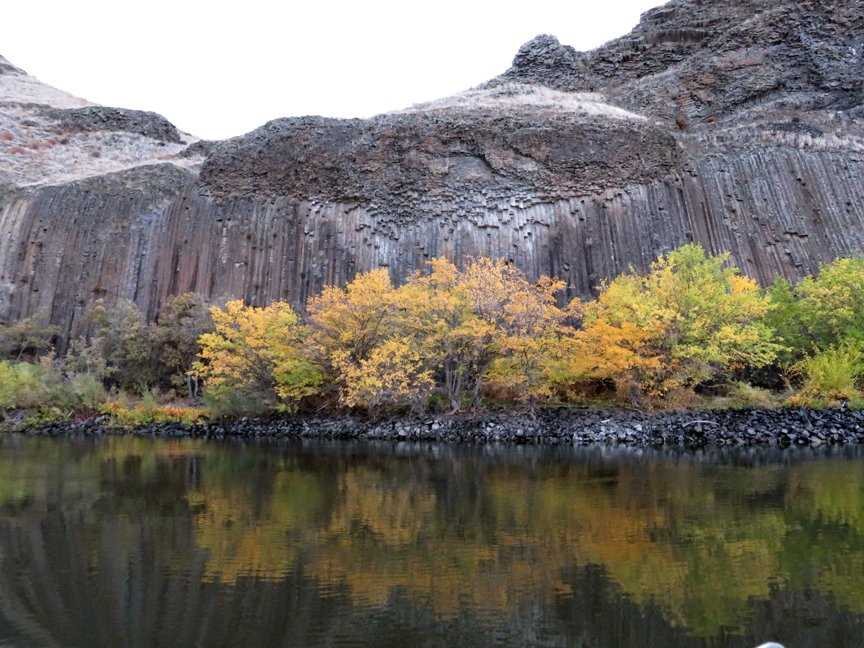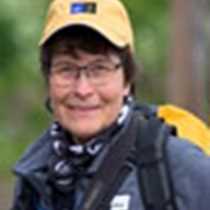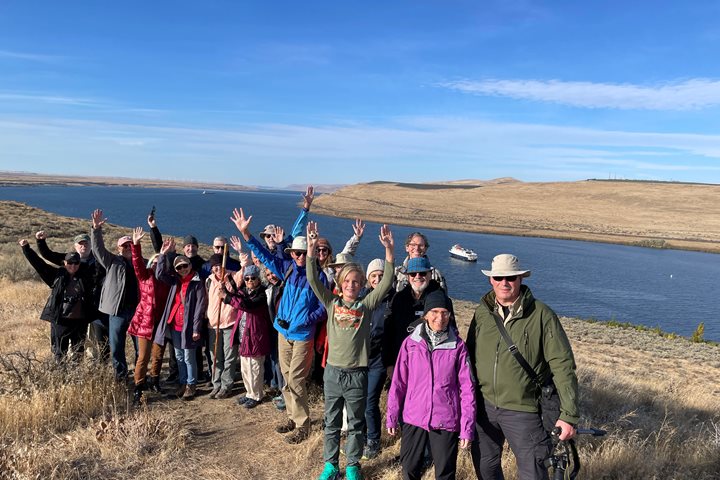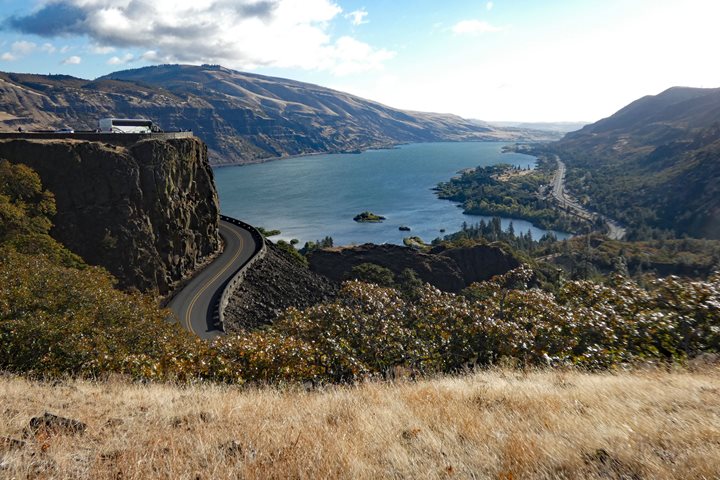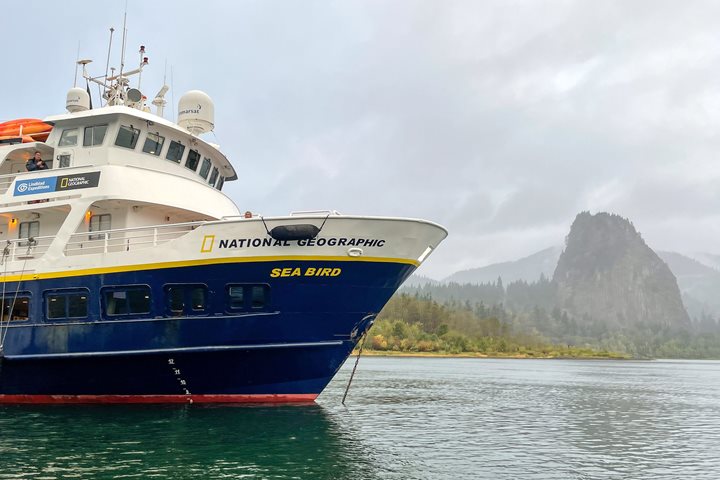The weather was cloudy, cool and breezy at dawn—but not raining as predicted. On this first morning of our expedition we boarded jet boats piloted by Cap’n Chuck and Cap’n Eric and away we went upstream on the Snake River, bound for wild and scenic Hells Canyon, the deepest river canyon in America. Our first stop was to view an amazing outcrop of columnar basalt with perfect hexagonal columns, some curved in curious ways that defy explanation. Trees at the base of the basalt cliff blazed gold in their autumn colors. Mallards and coots foraged in the shallow water at the river’s edge, and all along the river great blue herons stood motionless, sentinel-like, waiting to make a meal of some hapless fish passing by. Double-crested cormorants and bufflehead ducks flew past. A bald eagle perched in a ponderosa pine tree. Layered basaltic lava flows stepped up the canyon walls. Looming above the river the rock was weathered to a rich, dark brown and trimmed out with the buff-colored grasses of autumn. Crimson sumac and yellow mulberry trees added splashes of color to the landscape.
At the confluence with the Grande Ronde River we officially entered Hells Canyon and left the basalts behind for the moment, as we entered exotic terranes—new land added to western North America by plate tectonic actions. Now we began to see the first of many small beaches of pale sand scattered along the shore of the river. The sand has been delivered to the Snake River by the Salmon River that flows through the granitic Idaho Batholith where it picks up quartz, feldspar, and mica minerals. On up the river we went. High on a rocky outcrop a herd of Rocky Mountain bighorn sheep—ewes, lambs, and a young ram—were lolling on patches of grass and watching us.
Our morning stop was at Cache Creek, a former sheep ranch now part of the Hells Canyon National Recreation Area. Here, an orchard with pear, apple, fig, plum, and walnut trees is often visited by a black bear and her cub fattening up for winter. A flock of wild turkeys strolled on a knoll behind the barn.
We proceeded on upriver to the confluence with the Salmon River, the fabled “River of No Return”. On the rocks along the shore we saw chukars, quail-like birds making the “chukar, chukar” calls for which they are named. We stopped for a look at the confluence with the Salmon River and then proceeded again upstream to the “narrows”, the narrowest part of Hells Canyon where precipitous black cliffs rise high above. Here, we took photos and then turned downstream toward our lunch stop.
At Garden Creek Ranch, a Nature Conservancy property with green lawns and a large apple orchard, we enjoyed a hearty lunch on a veranda with beautiful views up and down the river. Taking a short walk up behind the ranch buildings, we saw seven mule deer does and fawns resting on a grassy hill.
Our last stop was at Buffalo Eddy where we nosed up to the rocks on the shore for a close look at some Native American petroglyphs. These petroglyphs are an enigma. Etched into the surface of the rock, they show creatures and people; it is unknown how many thousands of years ago they were made or who made them. Finally, on our last outing of the day at the Nez Perce National Historic Park we learned about the history of the Nez Perce people. At last the rain came. After dinner guest speaker Dr. Patrick Muffler gave a presentation on the Columbia River Basalts and the Missoula Floods to prepare us for tomorrow’s journey on the Palouse River.

